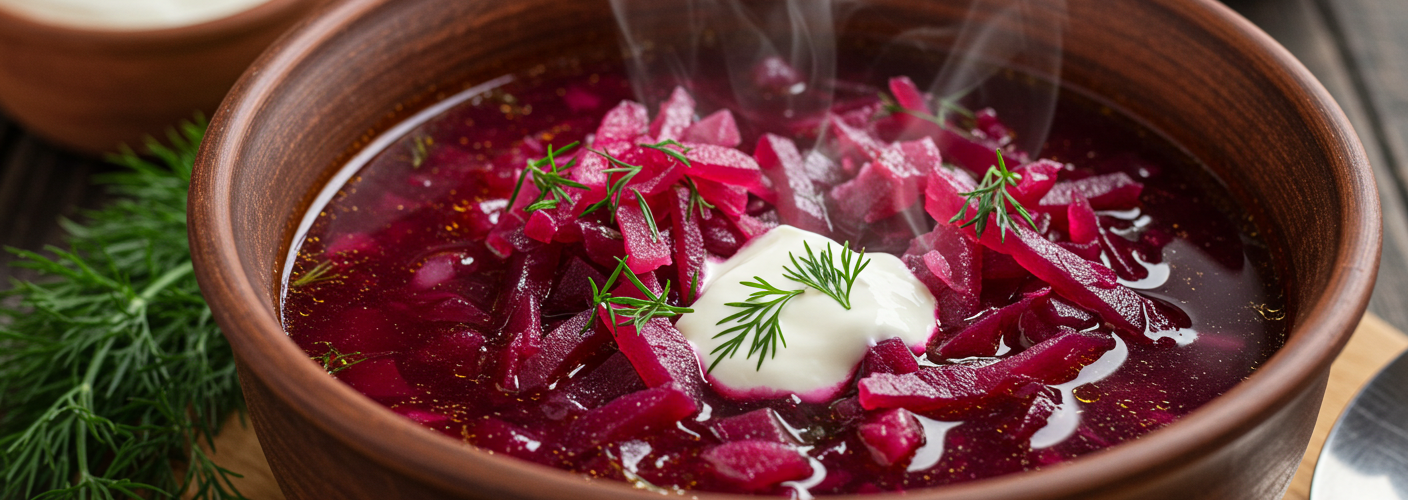Borsch, a vibrant soup known for its striking crimson color and unique flavor profile, has captivated taste buds for centuries, making it a staple in Eastern European cuisine. Originating from Ukraine, this hearty dish has enhanced family meals and gatherings with its rich history and cultural significance. The primary ingredient—beetroot—not only gives borsch its beautiful hue but also contributes to its distinctive tangy taste, making it a delightful culinary experience.
The Essence of Borsch
At its core, borsch is a versatile sour soup that can be tailored to suit individual tastes and preferences. Traditionally, it incorporates a combination of beets, cabbage, potatoes, carrots, and onions, creating a melange of flavors that meld together beautifully. Some recipes call for meat-based broths, typically beef or pork, to add depth, while vegetarian versions of the soup highlight the fresh, earthy taste of the vegetables.
The sourness in borsch is often achieved through the addition of vinegar or sour cream, balancing the sweetness of the beets and creating a symphony of flavors that is both soothing and invigorating. A dollop of sour cream served on top not only enhances the soup’s creamy texture but also elevates its taste, making each bowl even more irresistible.
Nutritional Benefits
Aside from its delectable taste, borsch is packed with essential nutrients. Beetroots are known for their high antioxidant content, which supports heart health and reduces inflammation. Additionally, they are an excellent source of vitamins C and B6, folate, and minerals like manganese and potassium. The combination of vegetables used in borsch provides a wealth of fiber, which aids digestion and promotes overall wellness. Including borsch in your diet is not just a treat for your palate but also an investment in your health.
Regional Variations
While the classic Ukrainian borsch is the most recognized rendition, variations of the soup can be found throughout Eastern Europe, each with its unique twist. For example, Polish borscht might incorporate mushrooms and often features a clear broth, while Russian versions may include meat and additional spices. In Romania, borscht is recognized for its sour flavor achieved through the fermentation of wheat bran. These regional interpretations reflect the creativity and resourcefulness of home cooks, adapting the dish to regional ingredients while preserving its foundational qualities.
Making Borsch at Home
Creating borsch from scratch can seem daunting, but with a little patience and the right ingredients, anyone can master this comforting dish. Start by roasting beets to enhance their sweetness, then sauté a mix of onions, carrots, and celery to form a flavorful base. Simmer the vegetables in broth, adding potatoes and cabbage, and let the flavors develop over time. Lastly, balance the taste with vinegar or lemon juice and serve piping hot with a generous spoonful of sour cream.
Conclusion
Borsch is much more than just a beetroot soup; it’s a dish steeped in tradition and culture, resonating with countless families across generations. Whether enjoyed on a chilly evening or at a festive gathering, borsch promises to warm your heart and nourish your soul. So next time you’re looking for something wholesome and delicious, consider inviting this timeless soup into your kitchen. It’s not just a meal; it’s an experience that transcends boundaries and brings people together.




Add comment